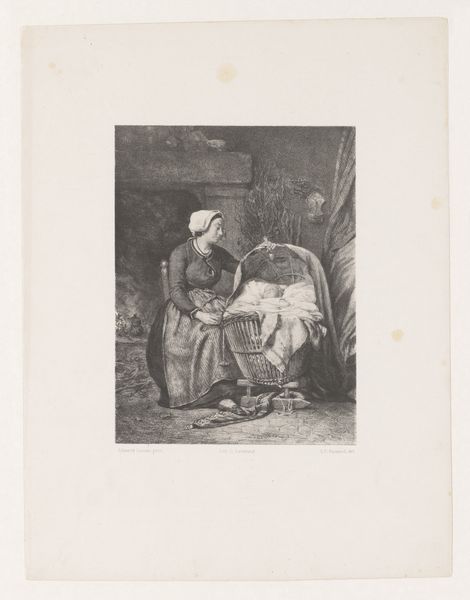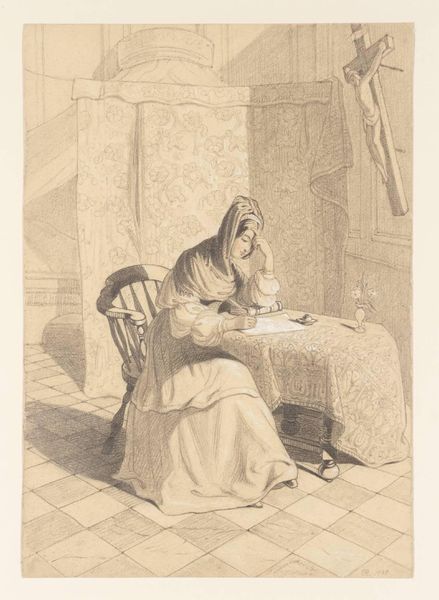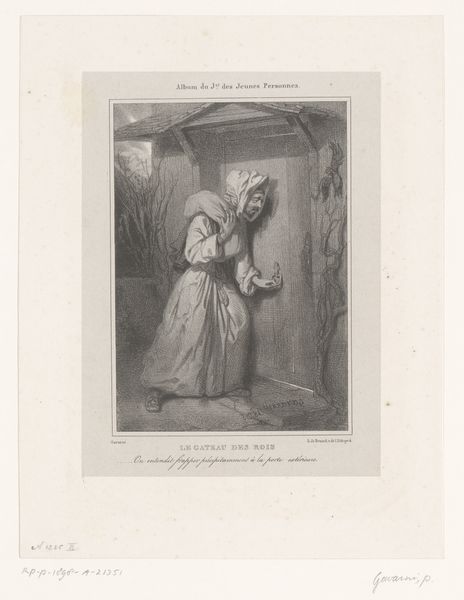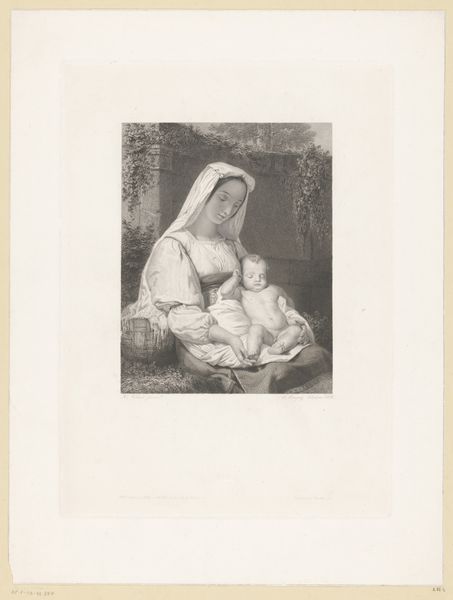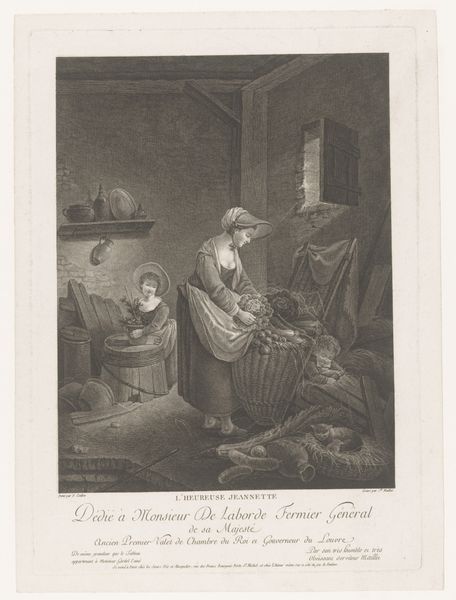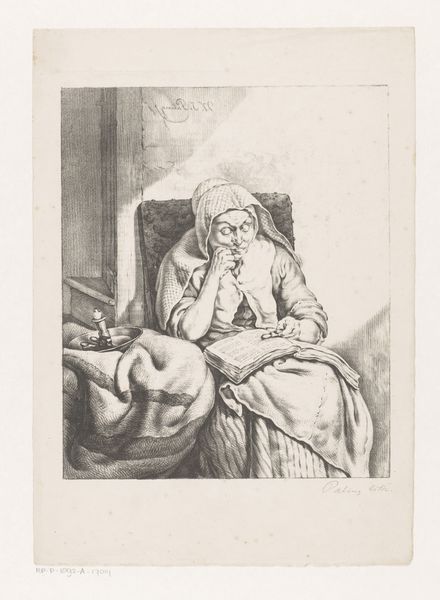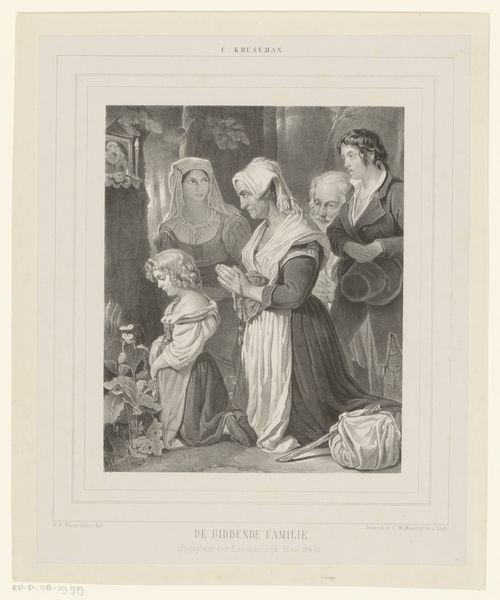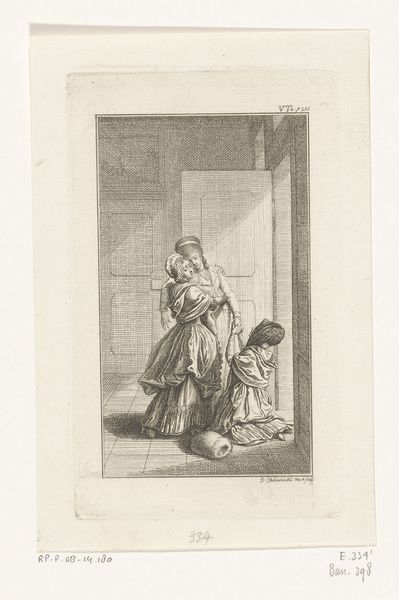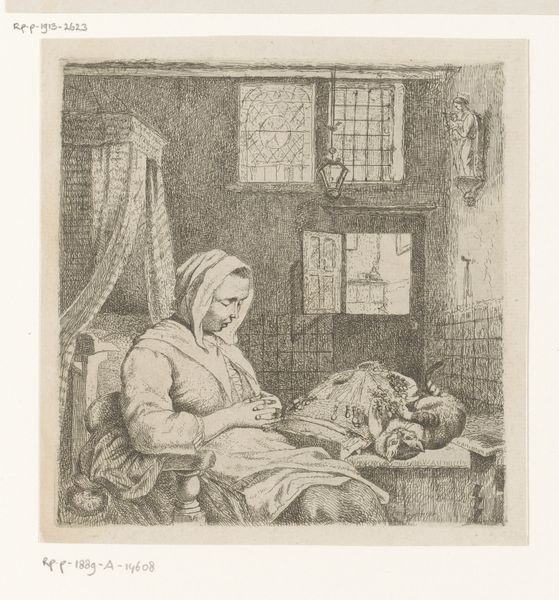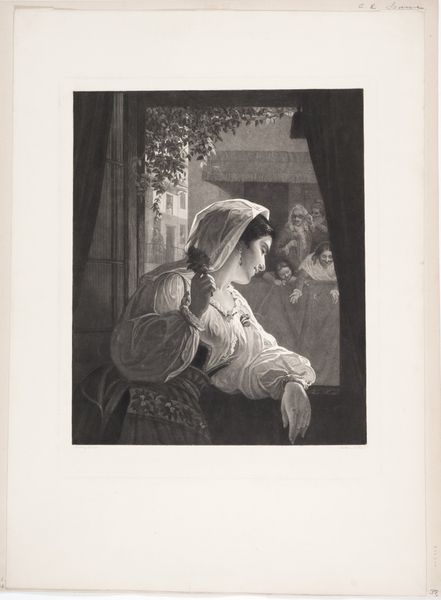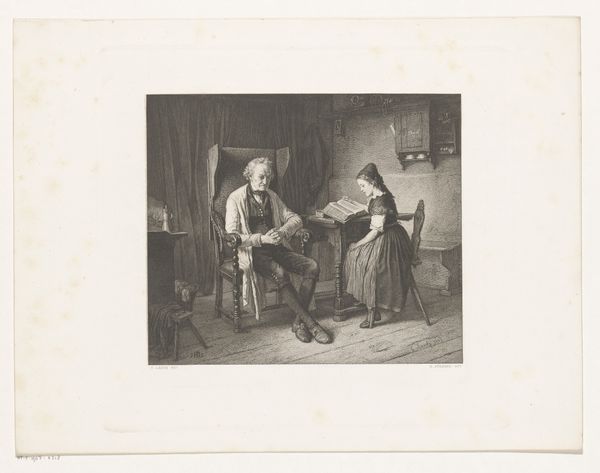
Dimensions: height 364 mm, width 237 mm
Copyright: Rijks Museum: Open Domain
Curator: This is "Zogende moeder," or "Nursing Mother," a print by Anthonie van Volkom, dating roughly from 1847 to 1865, currently residing here at the Rijksmuseum. It’s a beautifully rendered genre scene, very much in the Romantic style. Editor: There’s an immediate sense of quiet weariness emanating from her. The almost monochrome palette, the dimly lit interior… It evokes a feeling of gentle constraint. Curator: Let’s consider the printmaking process. Van Volkom, as the designer, would have collaborated with the engraver E. Maaskamp and printer J. Lutz. The layering of ink, the pressure applied to the paper—it’s all integral to conveying that very feeling. Notice how the cross-hatching builds depth but also traps the light. Editor: Yes, that subdued lighting. It definitely places the focus squarely on the woman, who is framed, rather literally, by the dark backdrop and what appears to be an open window to the left of the frame. You almost can’t help but see her as a symbol of quiet domesticity, especially contrasted against an emerging industrialised society, of the era. What commentary is the artist trying to make through this image? Curator: Perhaps not commentary so much as affirmation. Romanticism, at its core, sought a return to simpler virtues. This idealized version of motherhood, set against the backdrop of burgeoning capitalism and industrial labor, elevates domestic life as a moral counterpoint. Her dress, the fabrics, all indicate modest comfort, achieved through what sort of textile labour, or agricultural production of goods available, should make us consider what that privilege means here. Editor: Yet, there’s a sense of labour present within this quiet intimacy. The texture suggests that they’re not members of a completely detached upper class. Her direct gaze challenges this romanticised presentation. I see the complex social issues, rather than idealized virtues. Curator: Ultimately, I think the genius here resides in that duality. Van Volkom, in collaboration with the artisans who reproduced the piece, has produced an artifact ripe for interpretive play – we each bring our own understanding and preconceptions. Editor: Exactly. And it highlights how deeply ingrained societal narratives about motherhood and labour are, even within, or perhaps especially through art. I guess what strikes me most is just how open-ended this “simple scene” actually is, centuries later.
Comments
No comments
Be the first to comment and join the conversation on the ultimate creative platform.
